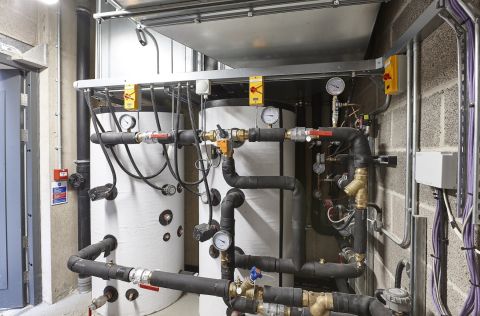Building Regulations in England & Parts L, F and O
With the transitional period now over, the updated 2022 Building Regulations Part L, Part F, and the new Part O, became legally enforceable for all new residential projects.
This is the biggest regulatory change the construction sector has seen in the last 40 years and a stepping stone in our transition away from fossil fuel systems toward decarbonised homes and the electrification of heat - and ultimately, the Future Homes Standard. This shift will impact the way we design buildings and specify technologies.
Have you decided which technologies to specify to achieve compliance for your next residential project?
The new English Building Regulations came into law on the 15th of June 2021. For projects with existing planning permission there is one year transitional arrangements period that applies on plot-by plot basis.
The updated Part L outlines the four compliance metrics for new developments: primary energy target, carbon emissions target, fabric energy efficiency target, and minimum standards for building fabric and building services.
The ventilation system choice under the updated Part F is linked to aritightness as we look to increase indoor air quality. New Part O offers modelling to help mitigate the risk of overheating in buildings.
We designed a simple guide to the changes to Part L and Part F, and the new Part O, and discuss what they may mean for your project.
Our range of HVAC solutions aim to provide future proof technologies to building projects over various sectors.
Request our presentation on Building Regulation changes that answer the most frequently asked questions.
Latest News
Our news section cover building regulations, what the changes to Part L, F, and the new Part of O entail, and what this means for HVAC specification.

Boris Johnson’s Ten Point Plan: Clean and green, but is it enough to support the decarbonisation of heat?
Boris Johnson has launched his Ten Point Plan for a green industrial revolution. Ahead of COP26, this aims to show how committed Government is in making the UK a world leader in sustainability. But will this plan finally offer the infrastructure needed for the decarbonisation of heat?

How do we maximise the potential of heat pump technology to help us achieve net-carbon objectives?
The roadmap to achieve the UK’s 2050 net-zero carbon target is still relatively unclear. This creates uncertainty about the implementation of low carbon solutions in the industry. The lack of direction in turn affects the ability to plan for future developments. Difficult specification choices, doubts over futureproofing strategies, and lack of preparedness for regulatory changes, are just some of the factors affecting heat pump specification in new developments and existing buildings in both residential and commercial sectors.

Which technologies are the most viable to deliver the decarbonisation of heating?
To deliver the decarbonisation of heating, we should deploy a wide range of technologies that can help to eliminate the use of high carbon fossil fuels. Electric solutions, especially those that utilise renewable energy, offer a viable route to ensuring our homes are heated in a low carbon way. To successfully transfer to electrical infrastructures and make the necessary adjustments that bring us closer to achieving the UK’s 2050 net zero target, the industry will need a clear plan with achievable interim targets.











